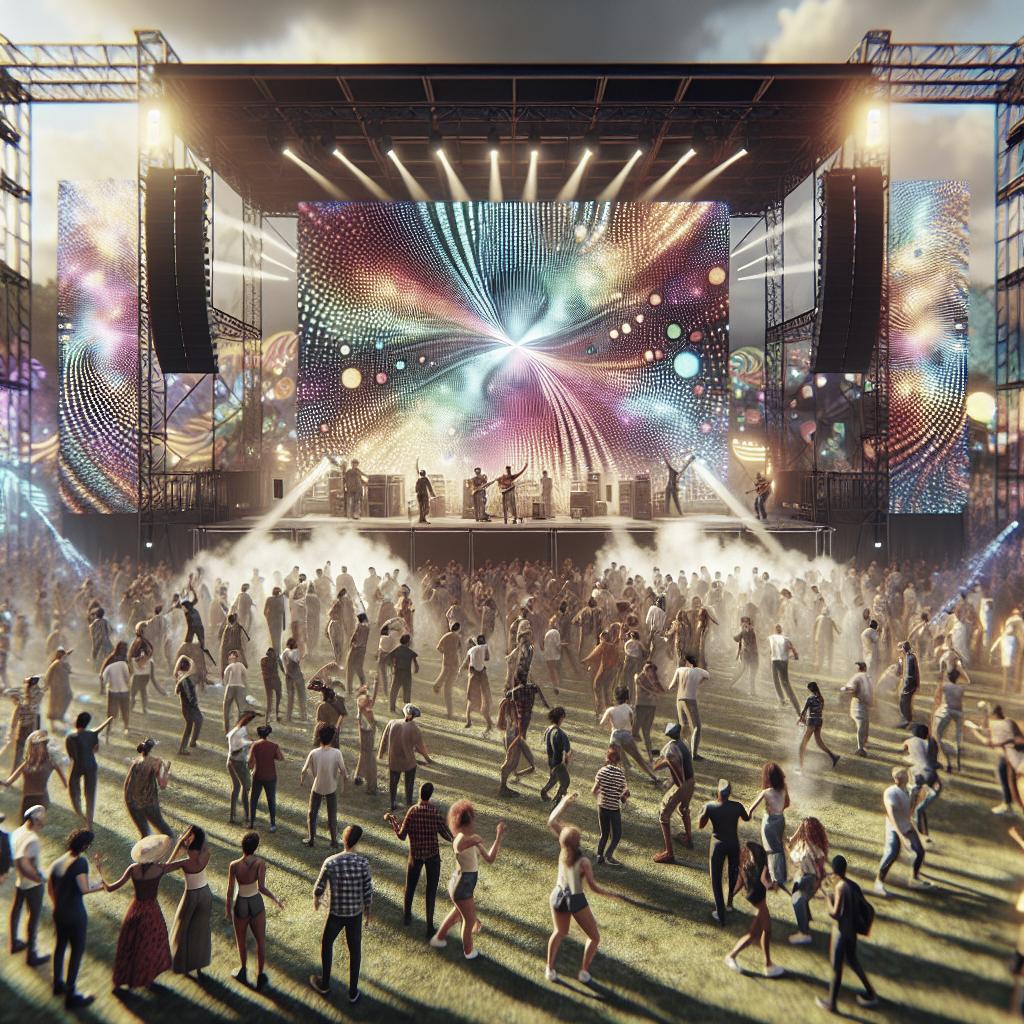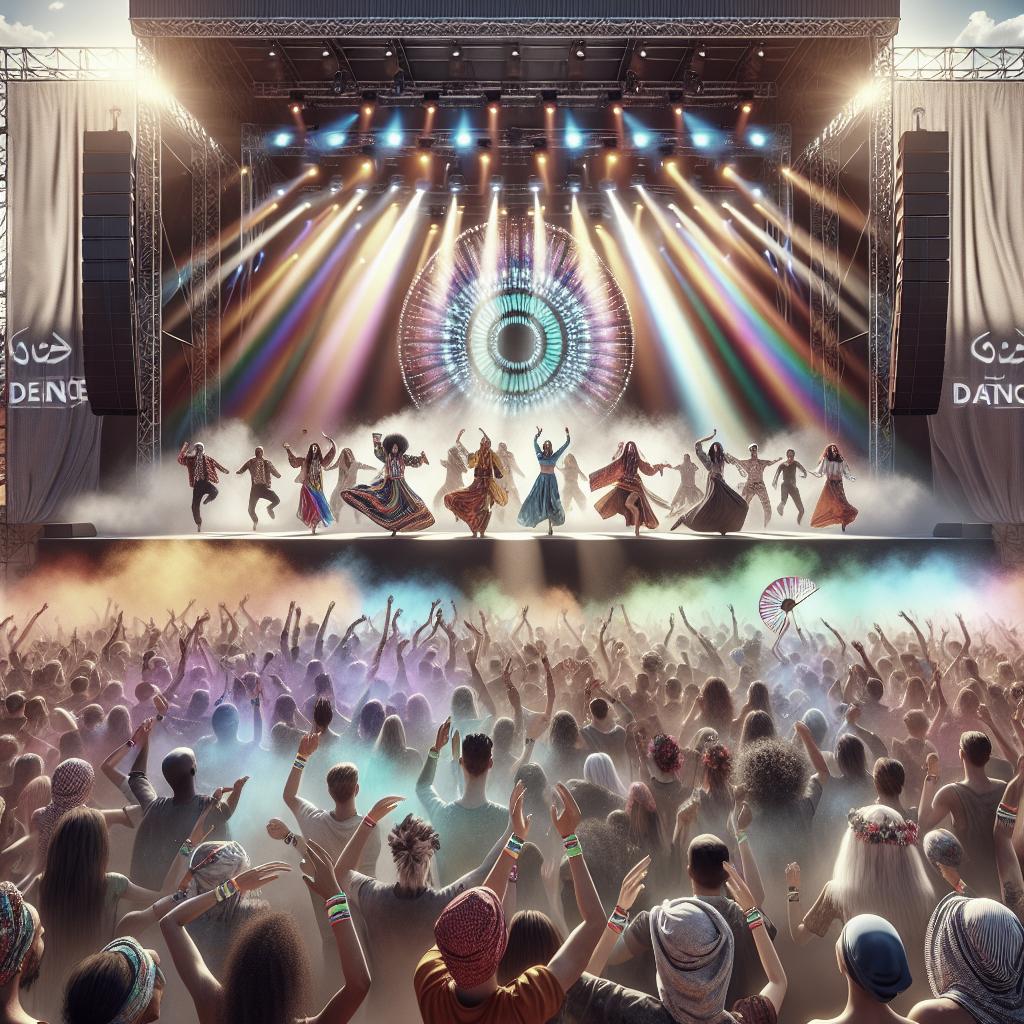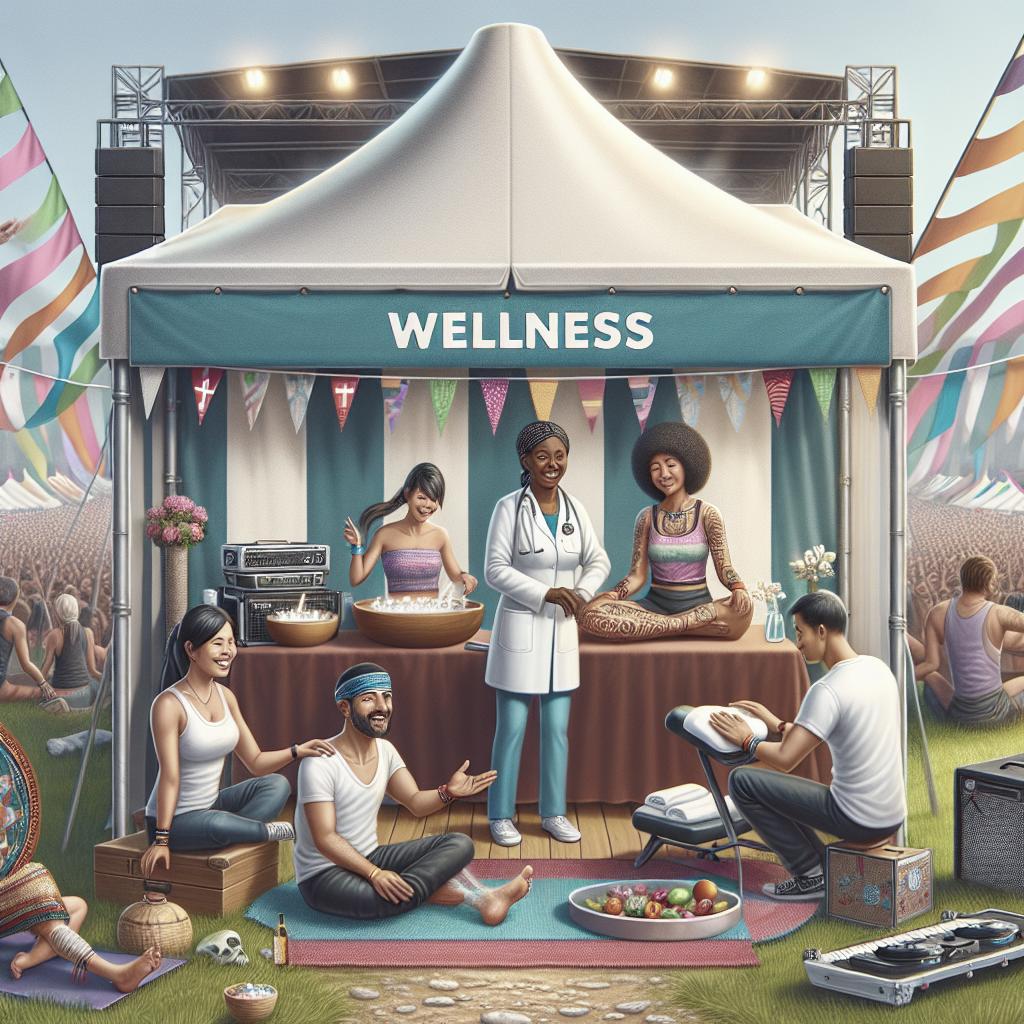<>
As music festivals continue to evolve, so do their offerings, expanding beyond the musical performances to incorporate stunning interactive art installations. These immersive experiences provide festival-goers with a unique opportunity to engage with art in ways that are both innovative and transformative. In this blog post, we’re diving deep into some of the most intriguing interactive installations featured at music festivals. We’ll explore how familiar objects are displayed in unfamiliar ways through the works of artists like Maggie West, Estudio Normal, and Kumkum Fernando. Then, we’ll venture into the intersection of art and technology with installations by Vincent Leroy and Ozel Office. Finally, we’ll delve into projects that push the boundaries of materials and design, such as those by MIT Media Lab and Simon Carroll. Join us on this journey to discover how art and technology are redefining the festival experience.
Displaying Familiar Objects in an Unfamiliar Way:
Maggie West / Eden
Maggie West’s “Eden” installation is a lush, vibrant celebration of nature reimagined. Featured at various music festivals, this work consists of illuminated botanical forms that glow with surreal colors under UV lights. West uses photography to create layered visuals of flowers and plants, offering festival-goers an otherworldly escape within the festival grounds. The psychedelic twist on natural elements serves to captivate and transport attendees, turning ordinary flora into extraordinary memories. The “Eden” installation not only draws attention for its visual appeal but also for its deeper message on the harmony between nature and technology. By using time-lapse photography, West emphasizes the often-overlooked beauty and complexity of botanical life. This fusion of art and nature is a gentle reminder of the ecological interconnectivity that binds us all.
Related Article
Further explore the immersive world of interactive installations with our article on the transformative power of digital art. Discover how artists are using cutting-edge technology to create experiences that are not just seen, but felt.
Estudio Normal / Capot
The “Capot” installation by Estudio Normal turns the mundane into the magnificent. This art piece features a series of vintage car hoods repurposed and adorned with polished steel and mirrors, creating a visually stimulating environment. At music festivals, “Capot” offers a reflective space where festival-goers can see themselves and their surroundings in a new light. By presenting familiar car parts in a novel context, Estudio Normal challenges our perceptions and encourages reflection—literally and metaphorically. The mirrored surfaces create an interactive experience that changes with each viewer’s perspective, making it a dynamic addition to any festival landscape.
Kumkum Fernando / The Messengers
Kumkum Fernando’s “The Messengers” transports us into a world of whimsical fantasy. This installation features totem-like sculptures that stand as colorful ambassadors with a presence that is both imposing and playful. Inspired by mythology and tribal art, these figures invite festival-goers to engage with them, touch them, and decode the stories they hold within their designs. “The Messengers” is more than just an art installation; it’s a narrative experience. Each sculpture is adorned with intricate patterns and symbols, encouraging viewers to explore and interpret their meanings. By merging familiar cultural motifs with imaginative creativity, Fernando creates an installation that resonates on both a visual and emotional level.
At the Intersection of Art and Technology:
Vincent Leroy / Molecular Cloud
Vincent Leroy’s “Molecular Cloud” is a mesmerizing blend of art and kinetic movement. Consisting of large, translucent spheres that appear to float in mid-air, this installation is brought to life through subtle mechanical movements. As the spheres shift and rotate, light refracts through them, creating an ever-changing landscape of shadows and reflections. Displayed at music festivals, “Molecular Cloud” offers an interactive spectacle where technology and artistry converge. The installation’s gentle, rhythmic motions evoke a sense of calm and wonder, drawing the viewer into a contemplative state. Leroy’s work exemplifies how mechanical engineering can be harnessed to elevate visual art, making it both dynamic and immersive.
Ozel Office / Holoflux
The “Holoflux” installation by Ozel Office takes interactivity to a new dimension with the inclusion of holographic technology. This futuristic piece is composed of large, transparent screens that display holographic images when viewed from different angles. At music festivals, “Holoflux” creates a portal-like experience, allowing festival-goers to step into a realm where light and space seem to meld. What makes “Holoflux” particularly captivating is its responsive design. The holographic images change in real-time based on the position and movement of the viewer, making each interaction unique. This engagement not only enhances the visual appeal but also offers a personalized experience that resonates on a deeper level.
Exploring New Materials:
MIT Media Lab / The Living Knitwork
“The Living Knitwork” by MIT Media Lab showcases the potential of adaptive materials in interactive installations. Made from a combination of reactive textiles and embedded sensors, this installation responds to environmental changes such as light, temperature, and human touch. When displayed at music festivals, “The Living Knitwork” becomes a living tapestry that shifts and changes, providing a sensory-rich experience. This installation exemplifies how cutting-edge research can be transformed into engaging public art. By integrating technology with traditional knitting techniques, MIT Media Lab offers a vision of the future where textiles are not just static objects but active participants in our environment.
Simon Carroll / Hayes Pavilion
Simon Carroll’s “Hayes Pavilion” is a masterclass in the innovative use of materials. Constructed from lightweight, biodegradable composites, this installation serves both as an architectural structure and an interactive artwork. The pavilion’s design, which includes spaces for sitting, lying down, and exploring, invites festival-goers to engage with it physically and spatially. What sets “Hayes Pavilion” apart is its focus on sustainability. By using eco-friendly materials and design principles, Carroll demonstrates that interactive installations can be both artistically compelling and environmentally responsible. This blend of functionality and aesthetics makes “Hayes Pavilion” a standout feature at any music festival.
Related Article
Interested in how materials science is influencing modern art? Check out our article on the latest advancements in sustainable art practices. Learn how artists are pushing the boundaries of what materials can do and creating works that are as responsible as they are beautiful.
Next Steps:
A deeper understanding of interactive installations can enrich the festival-going experience, making it more than just a musical journey. As technology continues to evolve, so too will the ways in which we experience art, offering endless possibilities for innovation and engagement. For now, immerse yourself in these breathtaking installations and appreciate the creativity and technological prowess that bring them to life. “`
| Category | Installation | Artist / Group | Description |
|---|---|---|---|
| Displaying Familiar Objects | Eden | Maggie West | A surreal botanical environment using UV-lit photography. |
| Displaying Familiar Objects | Capot | Estudio Normal | Reflective car hoods turned into polished steel and mirror artworks. |
| Displaying Familiar Objects | The Messengers | Kumkum Fernando | Totem-like sculptures inspired by mythology and tribal art. |
| Art and Technology | Molecular Cloud | Vincent Leroy | Kinetic spheres creating refractions of light and shadows. |
| Art and Technology | Holoflux | Ozel Office | Holographic images on transparent screens reacting to viewer movements. |
| New Materials | The Living Knitwork | MIT Media Lab | Adaptive textiles responding to environmental stimuli. |
| New Materials | Hayes Pavilion | Simon Carroll | Biodegradable composites forming a sustainable, interactive pavilion. |
“`


